Terry takes exclusive delivery of Weihrauch’s brand-new bullpups
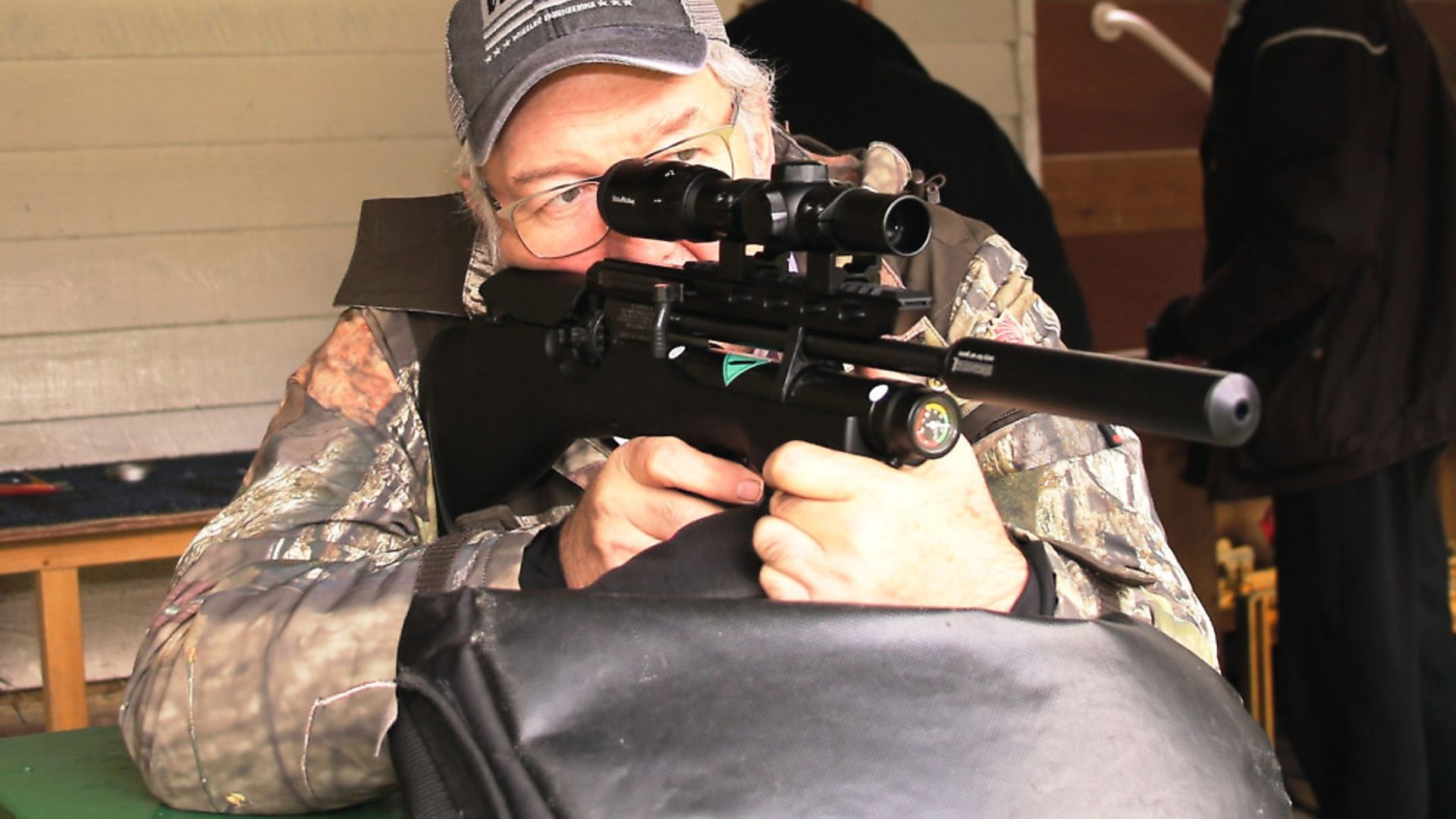 credit: Archant
credit: Archant
New models from Weihrauch are always big news, so when I received the call from Hull Cartridge Company, Weihrauch’s UK importer, to confirm that the first prototypes of the HW100 BP were on their way, I cleared the decks for some extensive testing. By ‘extensive’, I really mean ‘concentrated’, because at least one of the Weihrauch bullpups heading my way was required back at Weihrauch’s headquarters in Germany within a couple of weeks, so I’d need to pack a lot into comparatively little, which turned out to be the theme of the rifles, too.
Whilst I much prefer to take my own sweet time over exploring the features, capabilities and potential of a new rifle, intensive sessions can work extremely well, because anything that doesn’t suit will be immediately exposed, rather than worked around. More on this later, but for now let’s study the HW100BP rifle and Karbine.
 credit: Archant
credit: Archant
Birds of a feather
First, these rifles and their black, ambidextrous, soft-touch stocks are identical, apart from the Karbine’s front end, which includes a truncated barrel, fore end and air reservoir. Despite its diminutive size, from its 200-bar charge the BP Karbine still manages to produce over 50 shots at 11-plus ft.lbs. in .177, and 70 in .22. The standard BP offers 110 and 140 shots, respectively, and both rifles carry an RRP of £1160. Serious hardware at equally not-messing-about prices, then. Let’s explore further and see what’s available for the money.
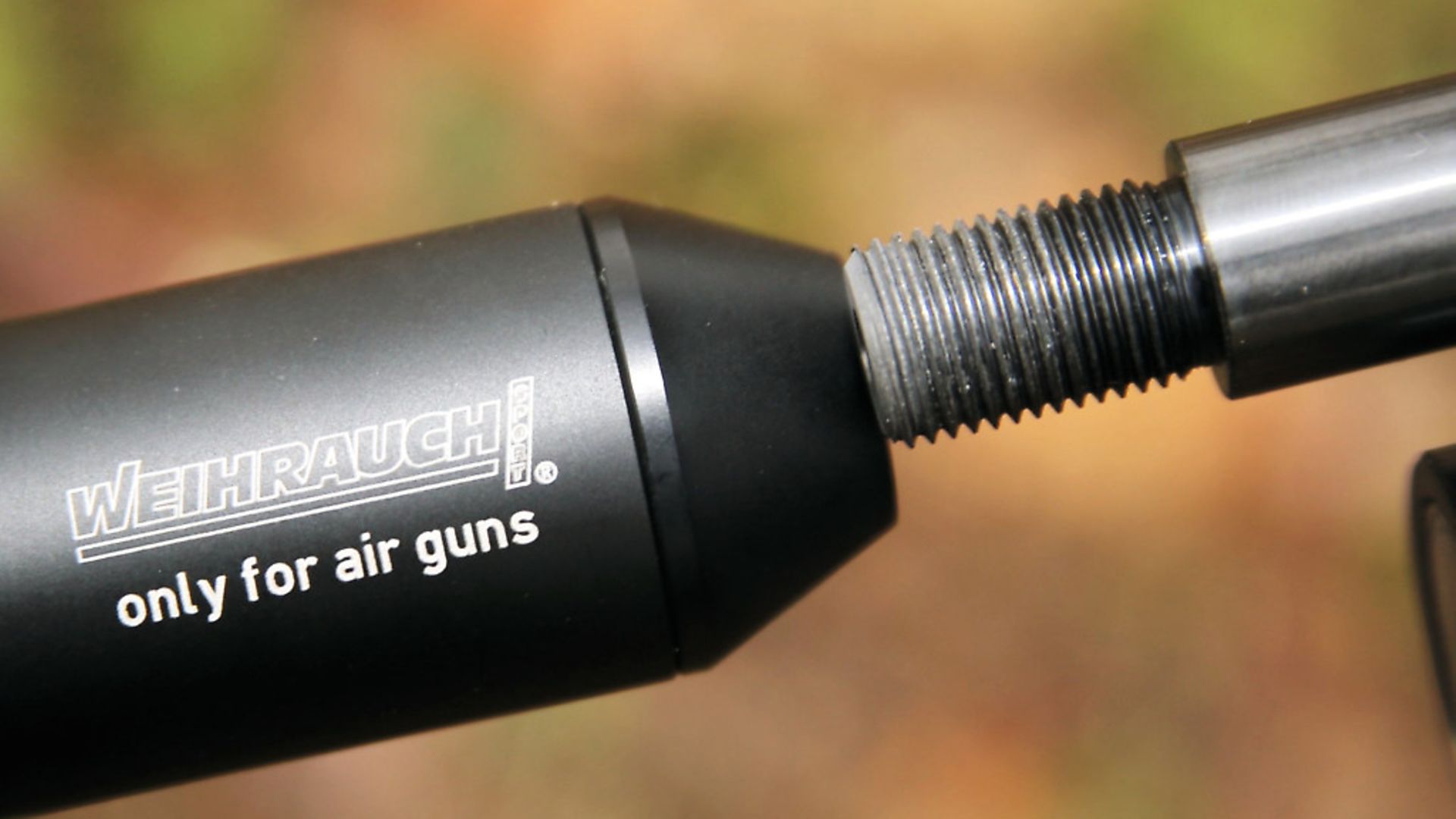 credit: Archant
credit: Archant
Bring on the boys
These BPs are Weihrauch PCPs and based on the company’s renowned HW100 mainframe, so performance should be a given. There are extra challenges with the bullpup format, though, and I was keen to see how Weihrauch had met these. With testing time at a premium, I enlisted the help of Bisley’s Monday Club cutting crew, who can always be relied upon to tell me what they like and don’t like about any airgun I put their way.
While the Bisley club veterans studied, and shot, the new BPs, I took a jeweller’s eyepiece to the rifle’s features, starting with what has to be the best scope rail I’ve encountered.
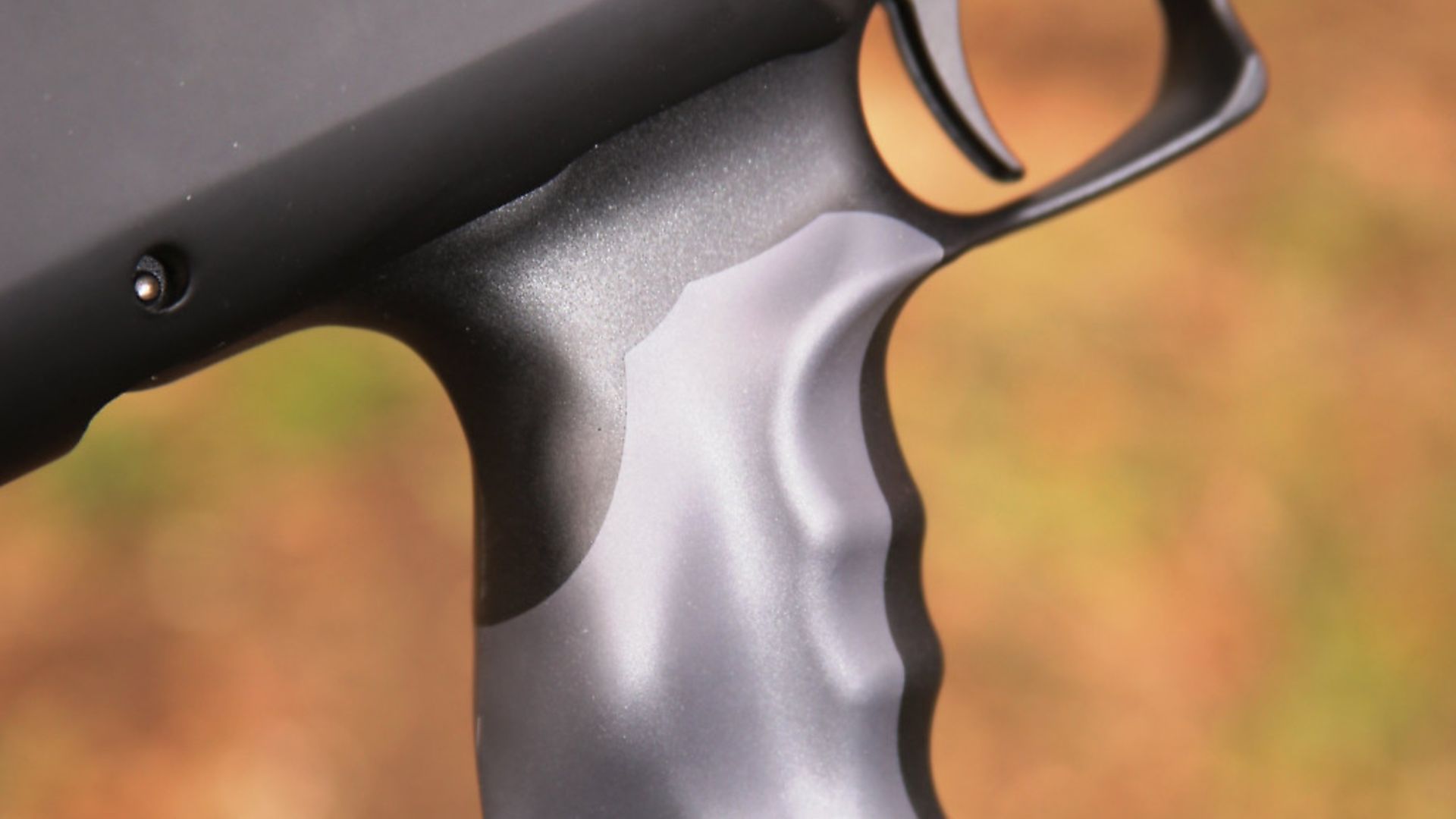 credit: Archant
credit: Archant
Better by rail
At first glance, the HW100 BP sports 7.5 inches (195mm) of Picatinny rail, fixed to a 12-inch (305mm) sight mounting block, complete with four oval ports to reduce weight and increase attractiveness. This main block is securely bolted to the rifle’s action and bolstered by another fixing that locates the top of the bracket that encircles the barrel and air reservoir.
A closer look reveals that the section of Picatinny rail is fixed by three bolts and slides onto the main sighting block along an 11mm dovetail fitting. This means you can unbolt the Picatinny section, slide it off, and clamp your scope directly to the conventional 11mm rails provided. Obviously, this system is handy because it doesn’t restrict the BP owner to Picatinny mounts.
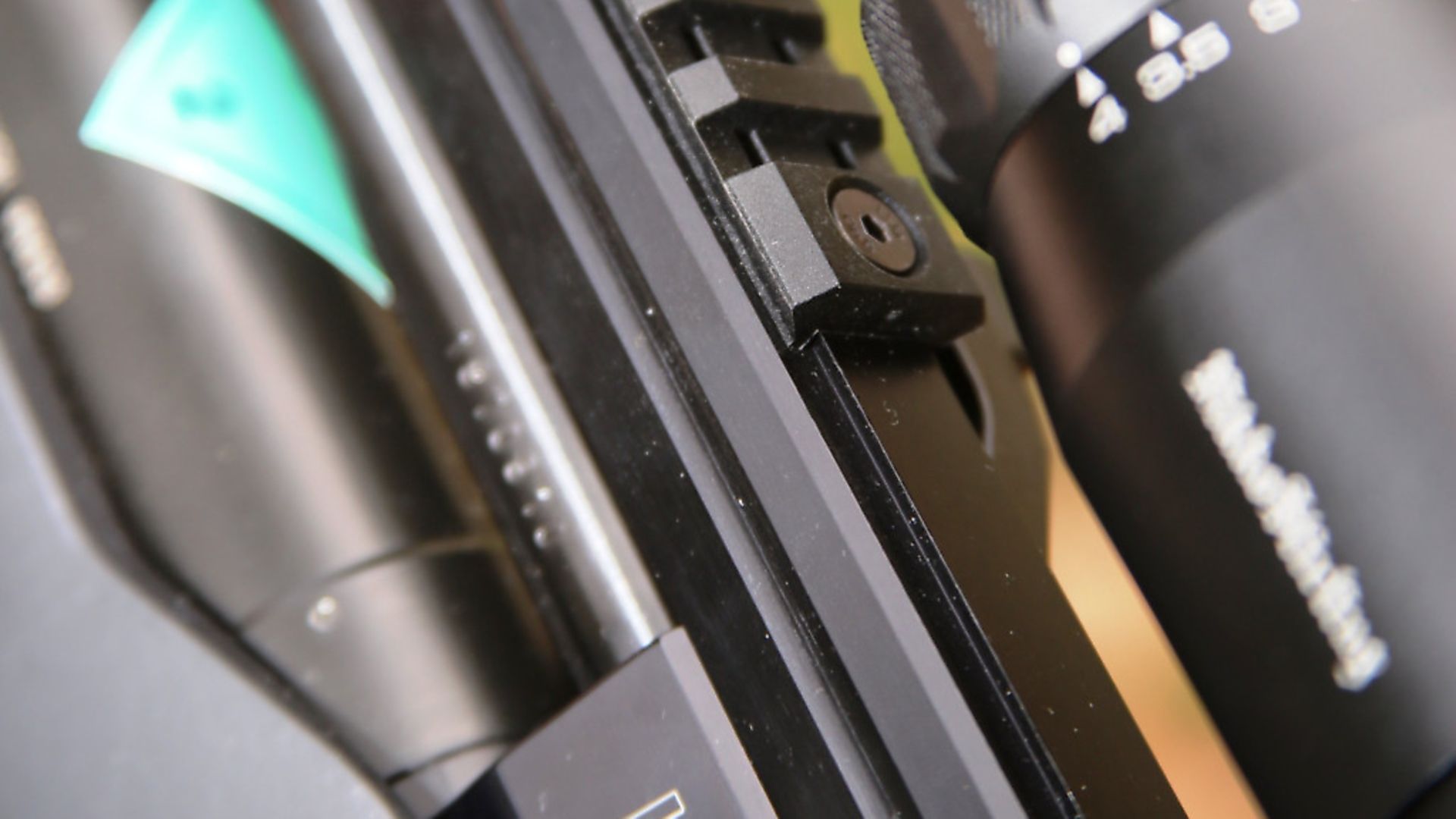 credit: Archant
credit: Archant
Ambi by design
Hull Cartridge company tells me that southpaws have been seriously considered, here, and these bullpups can be ordered with their sidelevers on the right or left. This isn’t a DIY job, but once carried out it’s backed by the rifle’s safety catch, which is now a double unit, operating on both sides of the rifle, tucked away at the rear of the cheek piece.
The grip on these rifles is an ambidextrous miracle, that somehow fits monstrous paws like mine, and also accommodates normal human hands, and of both persuasions. I have had the creation of this grip explained to me in detail by Hans Weihrauch himself, and the cost of it was genuinely shocking, but what a result. My Monday Club consultants were seriously impressed by it, and they’re not the easiest bunch to please, I assure you.
The 14-shot magazine still has to be inserted from the right-hand side of the action, where it’s retained by a thumb-slide, but overall, several southpaws had a play with these BPs and they handled them with no problems whatsoever.
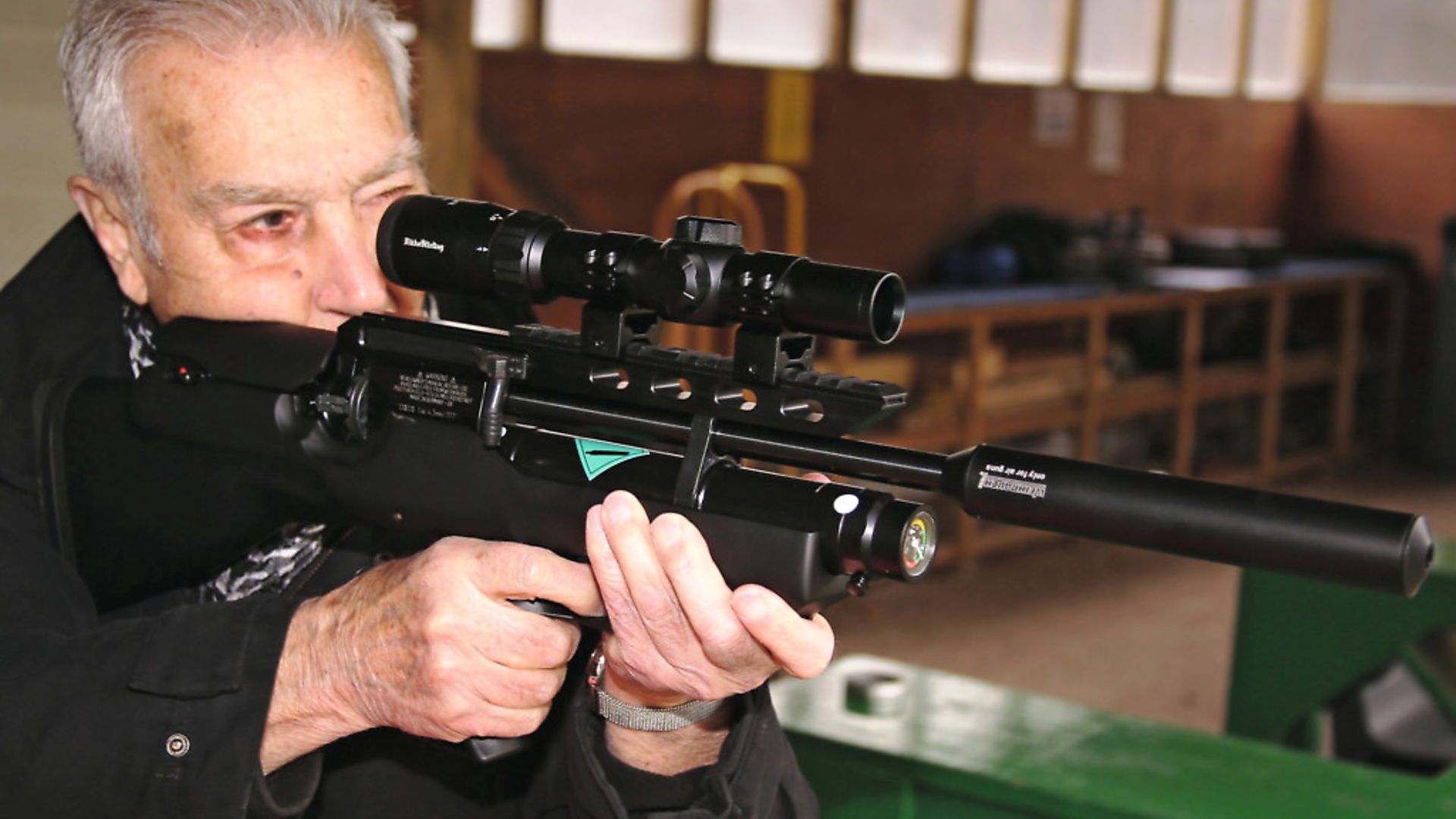 credit: Archant
credit: Archant
A touchy subject
Compliments were freely flying, mainly about the balance, handling, that grip I’ve already mentioned, the precision of the sidelever action and the matching precision of the rifles’ two-stage adjustable trigger, until a fly landed squarely in the features ointment. My consultant team to a man, and a woman – I’m an equal opportunities type of chap – complained about the small section of Picatinny rail fixed beneath the fore end of both rifles, but especially on the Karbine.
I was asked if they could remove the rail and within seconds, off it came. Cries of, ‘that’s better!’ and suchlike rang around the range, and the point was, literally, proven. Then I asked the chaps to put the rail back on, and things became a tad ‘less straightforward’. It turned out that the nuts which locate the little rail’s fixing bolts are not ‘captive’, so getting them to connect with the bolts proved tricky. My crack team of testers soon had it sussed, but it’s something to consider before you remove that rail. Perhaps the good folk at HW headquarters could consider fixing the nuts, and this has been added to my very short list of possible improvements.
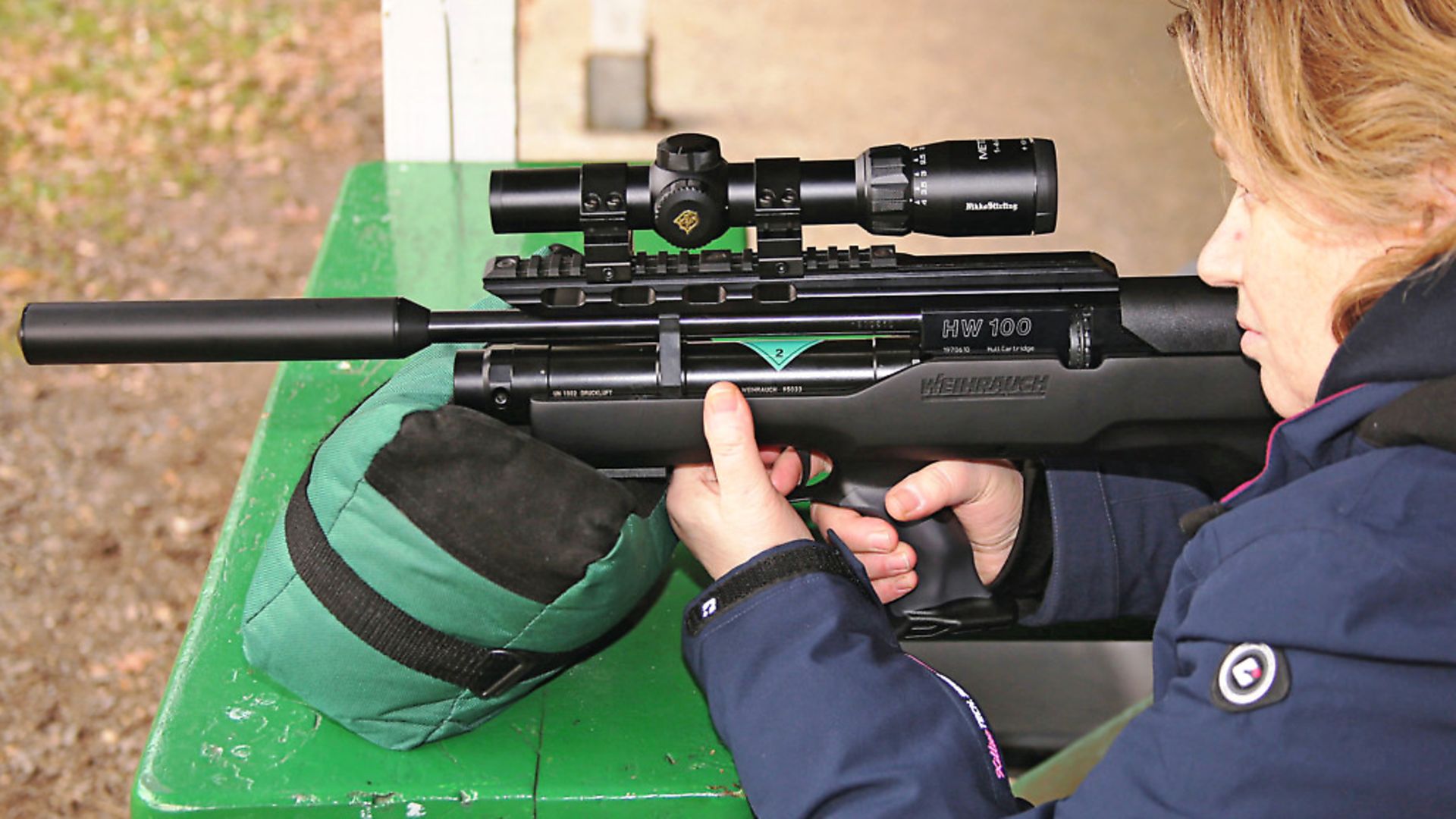 credit: Archant
credit: Archant
Super silence
Another suggestion I’ll be making when I speak to Hans at this year’s IWA show in Nuremberg, is for him to commission the production of a ‘bullpup silencer’, which will simply be a shorter, perhaps fatter, version of the benchmark unit currently supplied with the HW100 BP. This will be a styling exercise more than anything, but lopping another four inches or so off the overall length of these rifles would, I feel, raise their handling profile even more, especially when used in confined conditions.
As it stands, the supplied silencers sit totally solid on their long, threaded mounts, and every shot is stifled to a degree that has made more than one new Weihrauch PCP owner check the output of their rifles over a chrono’. Yes, this silencer works that well, and the rifles are amazingly quiet.
On the range
Both rifles performed exactly how anyone who has used a Weihrauch HW100 would expect. This is a tried and tested system – I’ve tested at least 15 versions of it, plus I regularly use an HW110 – and downrange accuracy was never going to be the main point of exploration, here. I knew the .177 test samples would bunch pellets tightly at ranges beyong those practical in the field, and so they did. Later, calm-weather bench-testing produced identical groups of sub-20mm at 45 yards, with a couple of less than this at 50 yards. I didn’t strive for the ultimate downrange grouping, because I already know what that is. The challenge is to get our own abilities as close as possible to the potential of rifles such as these, and that quest will go on forever, I suspect.
Meanwhile, this test, and any examination of a top-of-the-range bullpup, has to be about handling, balance, convenience and all-round usefulness, so that’s what occupied me once I’d left my crack team of consultants and headed for my nearest hunting permission to simulate some sporting usage.
Consistency aplenty
My final phase on the bench had been over the chrono’, where the standard HW100 BP returned a shot-to-shot variation of just 13 f.p.s. over 50 shots, and the Karbine surprised me by being very slightly more efficient, with 12 f.p.s. variation. I’d have thought the reduced air supply might have prompted greater variation, but then I’m just a test driver, not the clever technical specialists who develop these rifles.
I’ll just re-touch on the old chestnut of whether the HW100 system is regulated or not, and then it’s into the field for some pretend hunting.
Hans Weihrauch told me that the HW100 had a regulated action. Then I asked him if it had a regulator fitted. He smiled that twinkly-eyed smile at me and simply repeated, ‘it has a regulated action.’ I know when I’m not going to be told something, so I gave up and got on with my day job of shooting them and reporting on it. Life’s easier that way.
In the stimulated hunting field
To form my initial impression of these HW100 BPs, my next intensive shooting session involved placing the bullpups in a hunting scenario and seeing how they fared. First, I took care of the more ‘deliberate’ aspect of hunting by sniping at maximum range. Various acorns and last season’s conkers found themselves splattered all over the place, and from just about every stance, supported and unsupported, we’d use in the hunting field.
Unsurprisingly, I found the standard BP to suit my deliberate style slightly better than the Karbine, but the difference was minimal. Both rifles offer ‘that bullpup pointability’ and if this suits your style of shooting, you’re going to be impressed by the way these compact sporters stay on aim.
Backed into a bush
After the ‘considered’ phase was concluded, I picked up the HW100 BP Karbine and promptly burrowed my way into a handy holly bush, to see how easy, or otherwise, it would be to use the Weihrauch in confined conditions. This particular test turned out to be a bit pointless, in that whilst it proved the extreme handiness of the Karbine, the real barrier to accuracy when deep in a holly bush, is pellets hitting foliage. That said, swap bush for barn, hide, or vehicle interior, and the HW100 BP Karbine is an absolute dream of a hunting rifle.
Initial verdict
The latest models from Weihrauch are genuinely exciting. They offer everything that made the HW100 series so incredibly popular, only in a package that offers a different handling experience. I now have to send one of the bullpups back immediately, and keep the other for further testing, so which one stays and which goes up the motorway to Hull Cartridge Company? Tough choice, but I’m keeping the Karbine, and I’m going to live with it for as long as I’m allowed to hold on to it.
Weihrauch has produced another winner, here, of that I’m sure. Just how well it fares in the crowded bullpup market only time will tell, but every PCP the company has produced has sold extremely well and all the signs point to long-term success for these foreshortened rifles.
Specification
Model: HW100 BP and BP Karbine
Country of origin: Germany
Price: £1160 inc. 2, 14-shot magazines, plus silencer and charging attachments
Type: Pre-charged, multi-shot, bullpup sporter
Calibre: .22, .177
Cocking: Sidelever
Loading: Via removable, rotary 14-shot magazine
Trigger: 2-stage, adjustable
Stock type: Ambidextrous, soft touch hardwood, with adjustable butt pad
Weight: Standard 3.78kg (8.3lbs), Karbine 3.3kg (7.2lbs) unscoped
Length: Standard 835mm (32.8 ins), Karbine 735mm (29ins)
Barrel: Standard: 410mm (16ins), Karbine 310mm (12.2ins)
Fill pressure: 200 bar
Shots per charge: 50-plus in .177, 70-plus in .22
Variation over 50 shots: Average of 12.5 fps for .177s on test
Average energy: 11.5 ft.lbs.
Contact: Hull Cartridge on 01482 342 571
__________________________________________________
See more gun tests...
Weihrauch HW100 T FAC
Long-range shooting with the Weihrauch HW44
Weihrauch HW110 K